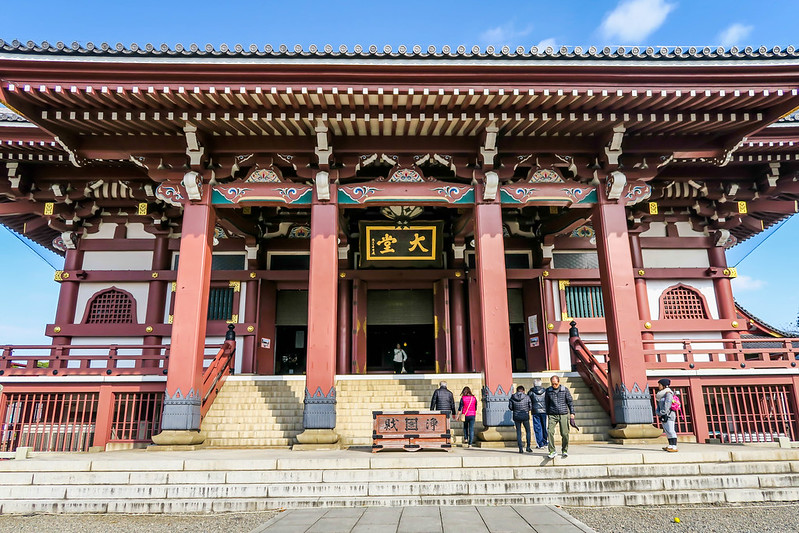
Located in southern Tokyo in the Ota ward is one of Tokyo’s larger temple sites, Ikegami Honmon-ji Temple.
As many have gathered there for New Year’s Eve, going there during the day to see how vast the temple is but also finding many other smaller temples all around.
To get there, it requires a walk up a hill and on the other side, a walk up a 96-step stairs. But compared to other temples, on a regular day, it’s not too packed. In fact, when I went, I was one of the few people there and that was fine with me because that meant better photos.
Ikegami Honmon-ji Temple is a temple dedicated to Nichiren-shu, a confederation of four of the original Nichiren Buddhist Schools that dated back to Nicheren’s original disciples and part of the fifth.
The temple observes the practices of the Nichiren Sect of Mahayana Buddhism. This sect bases its beliefs in the Lotus Sutra, a collection of ideals and rules developed from 100 BC to 200 AD. And the belief is that all people have an inherent Buddha nature in them, so they can achieve enlightenment in their current lifetimes. Other schools of Buddhism belief that it is necessary to gradually ascend stage-by-stage during the course of multiple lifetimes to achieve such enlightenment.
Nichiren’s disciple Nikko (Nikko Shonin is a senior disciple of Nicheren; 1246-1333) spent the rest of his life at Ikegami Honmonji-Temple and the temple grounds also include Nichiren Shu’s administrative headquarters.
Similar to other temples in Japan, the temple was reconstructed since the bombings of World War II.
But one can find surviving structures such as the five story pagoda built in 1608, the kyozo in 1784 and the hoto of 1781 where Nicheren was cremated were also rebuilt and reconstructed after 1945.
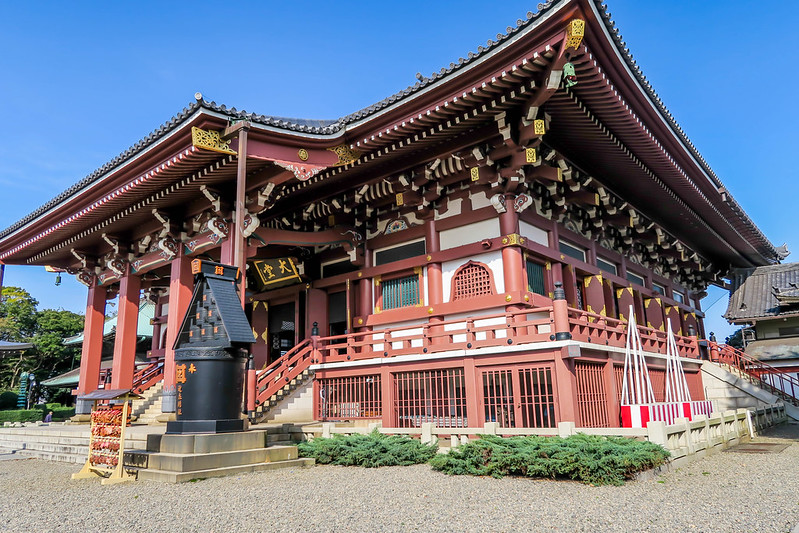
This is the main temple (daido). The original was destroyed during World War II and was rebuilt in 1964 (39th Showa). Now constructed of reinforced concrete with an Irimoya Zukuri roof.


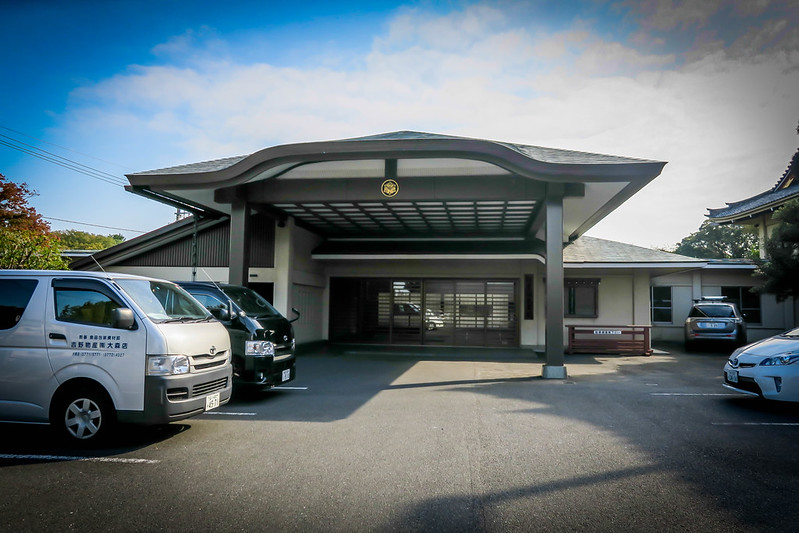
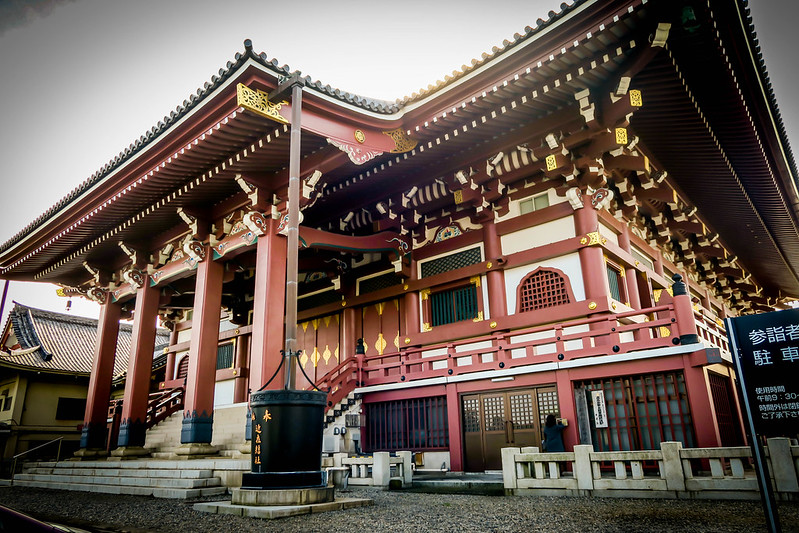
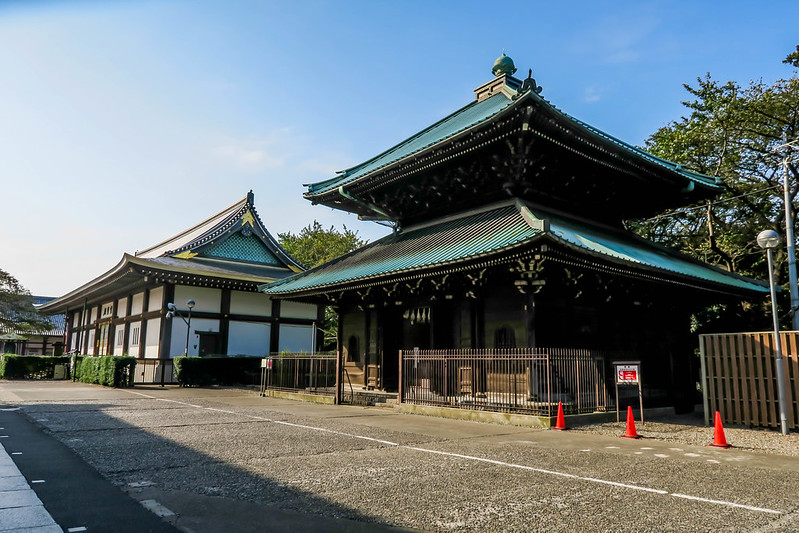
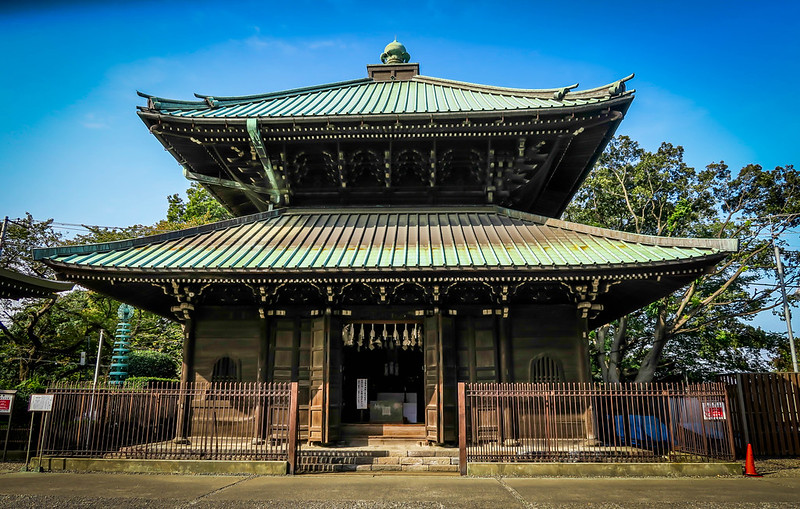
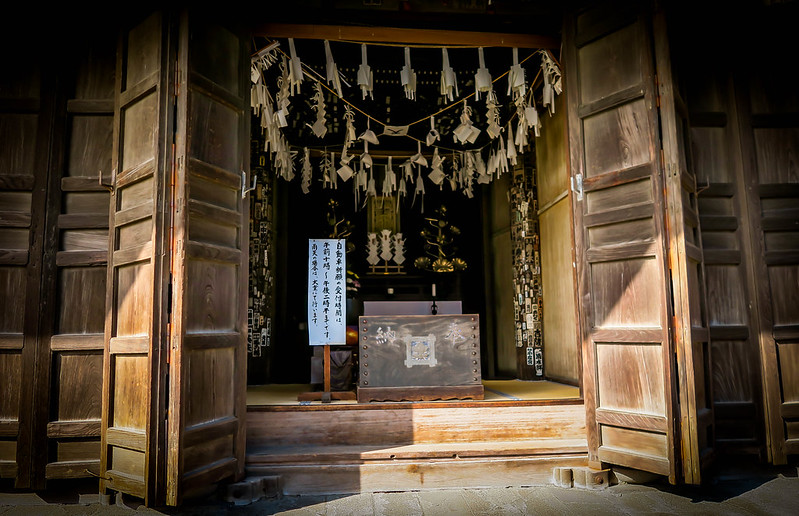

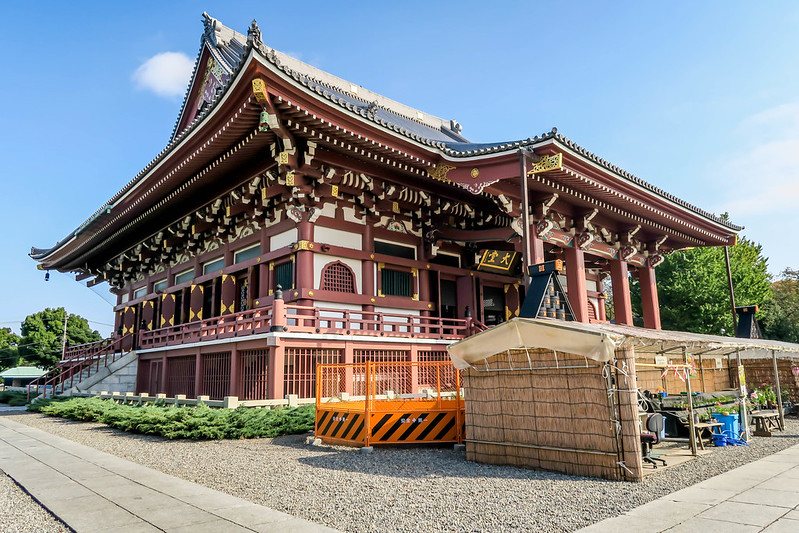
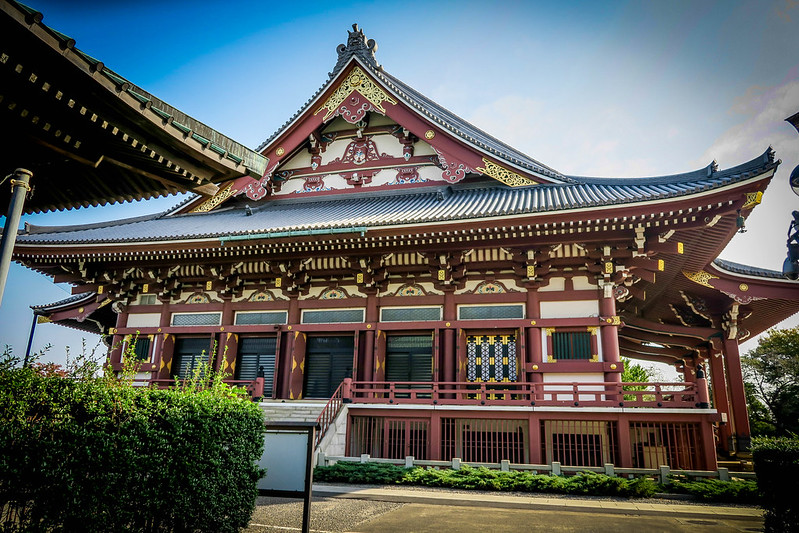
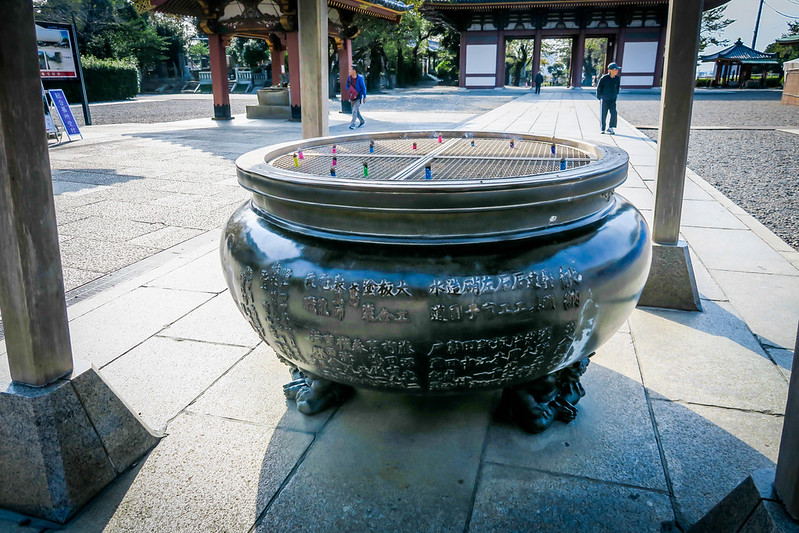
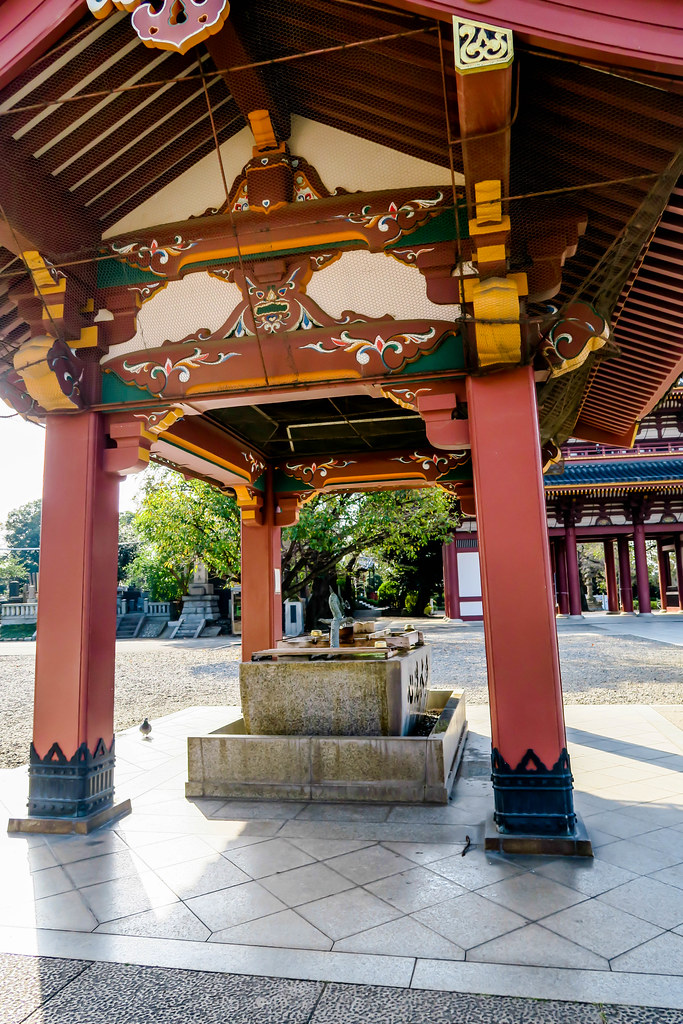
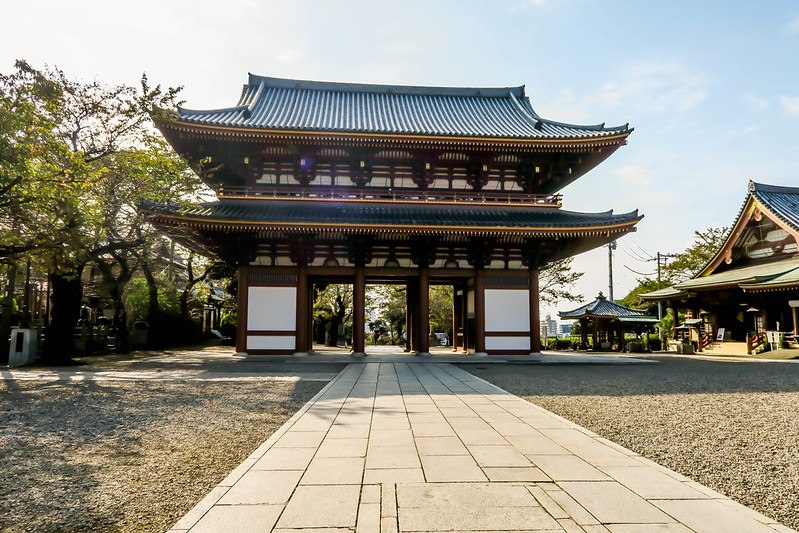

The shoro is the original bell donated by Yourinin, daughter of Kiyomasa Kato. She became one of wives of Shogun Yorinobu and was built in 1657 during the 4th Sieho of the Edo age. During World War II, the bell was cracked and warped due to fire and water damage. It is now housed beside a rebuilt belfry.
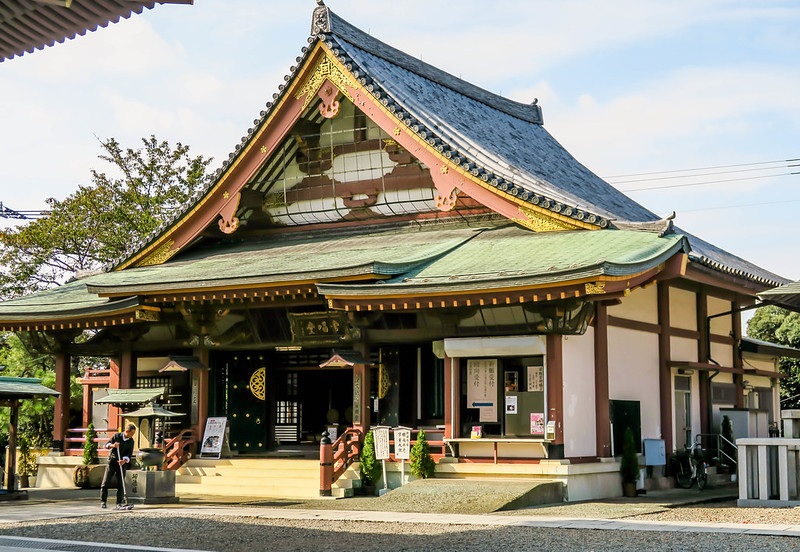

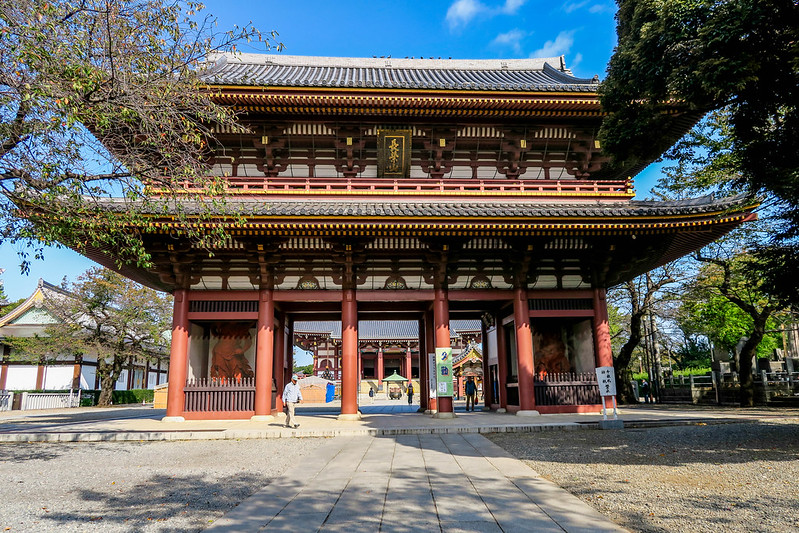
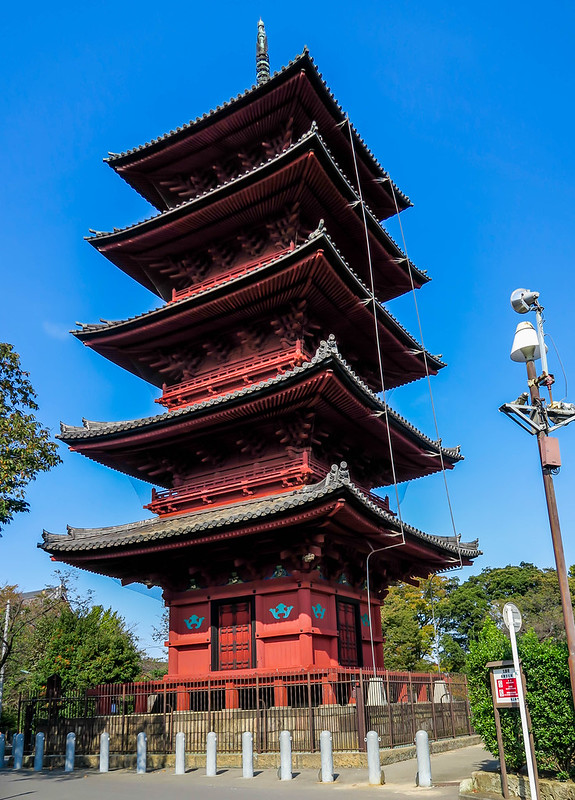
The 5-story pagoda was built in 1608 upon a suggestion made by Okabe no Tsubone, the nursing mother of the second Tokugawa Shogun Hidetada. It is the oldest 5-storied Pagoda in the kanto region and survived the bombings of World War II.

Known as the Shikyonaji Zaka (slope), if you are coming to the temple approaching the Somon Gate, the Shikyonanji Zaka is 96 steps dedicated by Kiyomasa Kato during the Keicho age (1596-1615).
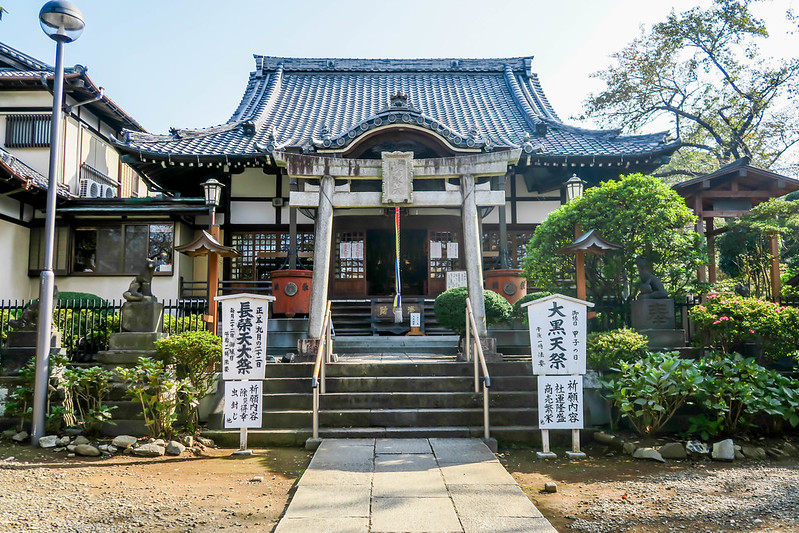
Right next to the gate is the Choeido Temple which the Choei Daii tokuten is enshrined. The deity protected Saint Nicheren during his exile on Sado Island and protects the Ikegami Honmonji Temple.
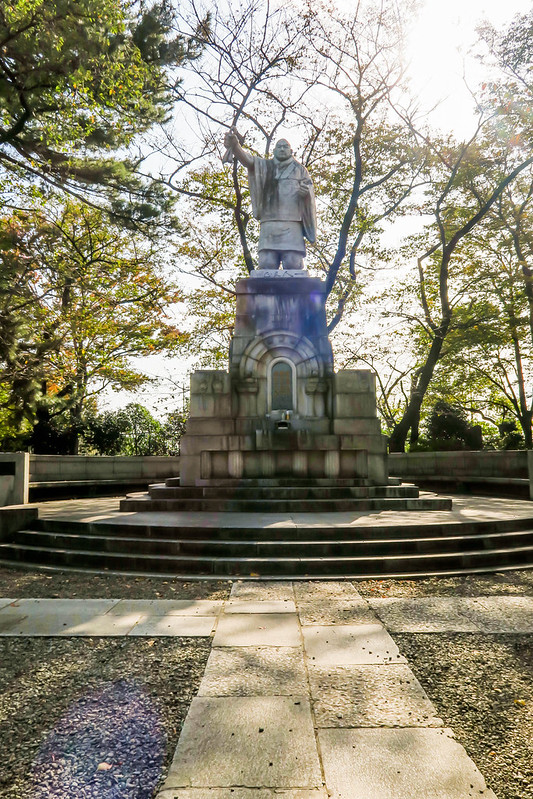
The big statue near the gate is of Saint Nicheren which was built in 1983 to commemorate the 700th anniversary of Saint Nicheren’s death. Carved by Seibo Kitamura from a block of aluminum.
In the Kanto Region, no doubt the Ikegami Honmon-ji Temple is one of the top temples to visit in Tokyo.
Here is video from my live stream from Facebook:
